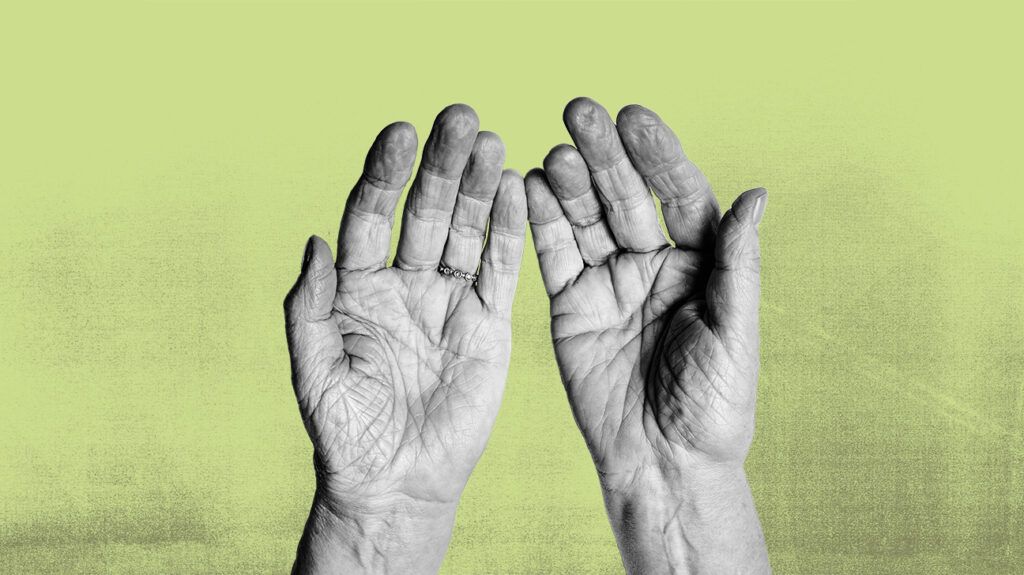Bilateral carpal tunnel syndrome occurs when the median nerve, which runs from the elbow through the wrist and into the palm, becomes squeezed in both wrists. This can cause tingling and pain in some fingers and weakness in the hand.
The carpal tunnel is a narrow passageway in the wrist through which the median nerve and ligaments pass. Because this nerve gives feeling and controls muscles in part of the hand, symptoms arise when the tunnel narrows and puts pressure on it.
The bilateral form of the syndrome is more common than the unilateral form, which refers to the involvement of one wrist rather than both. Roughly
Keep reading to learn more about bilateral carpal tunnel syndrome, including symptoms, causes, risk factors, diagnosis, treatment, prevention, and when to call a doctor.

Bilateral carpal tunnel syndrome
As the condition worsens, symptoms become more frequent and last longer. They may include:
- tingling, pain, numbness, and burning, mainly in the thumb, index finger, and ring fingers
- tingling or pain that spreads up the forearm
- occasional shock-like sensations that spread to the thumb and index, middle, and ring fingers
- clumsiness and weakness in the hand that pose a challenge in performing fine movements, such as buttoning clothes
- dropping objects due to numbness, weakness, or a lack of awareness of the position of the hand in space
Learn more about what the pain feels like.
Doctors
It is likely that a combination of factors put pressure on the median nerve and tendons in the carpal tunnel. For example, irritated tendons can swell, which narrows the passageway and presses on the median nerve.
However, it is often not possible to pinpoint a single cause.
Females and older adults have a higher likelihood of developing bilateral carpal tunnel syndrome. Other risk factors include:
- Heredity: This likely plays an important role, as some individuals may have a smaller carpal tunnel due to anatomical differences that decrease tunnel space.
- Hand and wrist position: Activities that involve extreme extension or flexion of the wrist and hand, especially for a prolonged time, can put more pressure on the nerve.
- Repetitive hand use: Activities that require repetitious movements of the hand and wrist for a prolonged period may irritate wrist tendons, resulting in swelling that increases pressure on the nerve.
- Certain health conditions: Rheumatoid arthritis, diabetes, and thyroid conditions link to carpal tunnel syndrome.
- Pregnancy: Hormonal changes during pregnancy can produce swelling that increases pressure on the nerve.
Diagnosis
- Physical examination: This may include testing fingers for sensation, testing muscles at the base of the thumb for strength, and tapping the median nerve to see if it causes tingling or numbing.
- X-rays and lab tests: Sometimes, doctors use these tools to rule out arthritis, fractures, or nerve-damaging conditions.
- Electrical signals tests: In cases where a physical examination does not provide a diagnosis, doctors may use tests such as:
- nerve conduction study to measure nerve signal transmission speed in the carpal tunnel
- ultrasound to determine if the median nerve is swollen within the tunnel
- electromyography to see the severity of muscle damage
Around
Treatments include:
Nonsurgical treatments
Nonsurgical treatment options include splinting (or bracing) and steroid shots.
A splint holds the wrist in a position that decreases pressure on the median nerve. Steroid shots are injections of a corticosteroid — which is an anti-inflammatory medication — into the carpal tunnel. They can help reduce symptoms.
Surgical treatments
In
Surgical treatment involves one of
In an endoscopic release, a surgeon makes one or two small incisions in the wrist and then inserts a tube with an attached camera to look at the area on a monitor. The surgeon then cuts the carpal ligament with a small knife inserted through the tube.
Learn more about surgical procedures for carpal tunnel.
Preventive measures involve the
- using correct posture and wrist position
- performing stretching exercises
- wearing fingerless gloves to keep the hands warm
- taking frequent breaks
- redesigning the workstation to enable the wrist to maintain a neutral position
Learn more about some hand exercises to try.
Bilateral carpal tunnel syndrome can present with numbness and tingling in some of the fingers. There are many risk factors that could lead to it, including heredity, repetitive hand use, and pregnancy.
Doctors diagnose the condition with a physical examination. Occasionally, X-rays, lab tests, and electrical signal tests may be necessary.
Nonsurgical treatment may involve splinting or steroid injections, but
A person should try to consult a doctor when they start having symptoms since early diagnosis and treatment can help prevent further median nerve damage.
